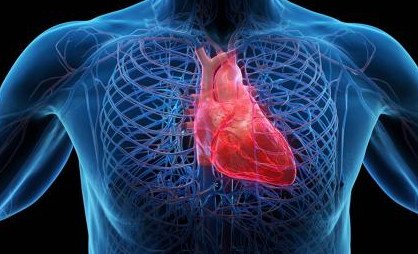Журнал "Медицинский совет" №5, 2019
DOI: https://doi.org/10.21518/2079-701X-2019-5-14-19
Даабуль И.С., врач-терапевт лечебно-диагностического отделения, Соколова А.А., к.м.н., ассистент кафедры, Царев И.Л., аспирант кафедры, Напалков Д.А., д.м.н., профессор, Фомин В.В., чл.-корр. РАН, профессор, д.м.н., заведующий кафедрой, Федеральное государственное автономное образовательное учреждение высшего образования «Первый Московский государственный медицинский университет имени И.М. Сеченова» Министерства здравоохранения Российской Федерации (Сеченовский университет)
В последние годы как отечественными, так и зарубежными авторами было опубликовано много работ по антикоагулянтной терапии при фибрилляции предсердий (ФП). Самые крупные из них посвящены изучению прямых оральных антикоагулянтов (ПОАК), появившихся в данной области начиная с 2009 года, и их сравнению с антагонистами витамина К (АВК) по эффективности, безопасности и другим важным характеристикам. Исследований, посвященных ПОАК и сравнению их как с АВК, так и между собой при ФП в сочетании со сниженной фильтрационной функцией почек, гораздо меньше, и большинство из них носят ретроспективный характер. Между тем распространенность хронической болезни почек (ХБП) в популяции весьма высока, и при подборе антикоагулянтной терапии именно таким больным врачи сталкиваются с наибольшими трудностями.
Цель. Оценить влияние АВК и ПОАК на фильтрационную функцию почек в реальной клинической практике у пациентов с ФП в зависимости от стадии ХБП.
Материалы и методы. Проведено проспективное одноцентровое нерандомизированное неинтервенционное наблюдательное исследование в параллельных группах, в которое вошли 92 пациента с ФП и ХБП 1–4 стадии (С1–С4). Группу сравнения составили 35 пациентов с ФП без сопутствующей ХБП. Возраст пациентов варьировал от 44 до 94 лет (средний возраст составил 72,2 ± 8,5 лет). Пациенты обеих групп получали антикоагулянтную терапию АВК (варфарином) или одним из зарегистрированных в РФ ПОАК (дабигатран, ривароксабан, апиксабан). При динамическом наблюдении (медиана наблюдения составила 10 месяцев) контрольные визиты осуществлялись каждые 3 месяца. Во время визитов проводилась оценка эффективности (инсульты/ТИА и ТЭО) и безопасности (большие и малые геморрагические события) антикоагулянтной терапии, а также функционального состояния почек в динамике (КК по Кокрофту – Голту, СКФ по CKD-EPI).
Результаты. Приводятся основные результаты по группе пациентов с ФП и ХБП. Значимой динамики фильтрационной функции почек в зависимости от принимаемого антикоагулянта (АВК или представители класса ПОАК) выявлено не было. За время наблюдения не было зарегистрировано тромбоэмболических осложнений и больших кровотечений. На фоне приема любой из доз ривароксабана отмечалось больше малых геморрагических событий, чем на фоне приема других антикоагулянтов.
Выводы. У пациентов с ФП и ХБП не было выявлено достоверного влияния того или иного антикоагулянта на фильтрационную функцию почек, что, возможно, связано с получаемой в большом проценте случаев сопутствующей нефропротективной терапией (иАПФ/БРА, антагонисты кальция, статины). Терапия ПОАК и варфарином у пациентов с ФП и ХБП в течение в среднем 10 месяцев наблюдения была эффективна и безопасна. При ФП и ХБП из ПОАК несколько более предпочтительным в отношении малых геморрагических событий представляется использование дабигатрана или апиксабана, лечение которыми реже приводит к развитию геморрагических событий.
Для цитирования: Даабуль И.С., Соколова А.А., Царев И.Л., Напалков Д.А., Фомин В.В. Антикоагулянтная терапия при фибрилляции предсердий и сопутствующей хронической болезни почек: результаты проспективного исследования. Медицинский совет. 2019; 5: 14-19. DOI: https://doi.org/10.21518/2079-701X-2019-5-14-19.
Конфликт интересов: авторы заявляют об отсутствии конфликта интересов.
Anticoagulant therapy in patients with atrial fibrillation and concomitant chronic kidney disease: the results of a prospective study
Daabul I.S., MD, general practitioner, Sokolova A.A., MD, PhD, assistant professor, Tsarev I.L., MD, Junior Researcher, PhD Student, Napalkov D.A., MD, PhD, Professor of Chair, Fomin V.V., Corresponding Member of RAS, Professor, MD, Vice-Rector, Federal State Autonomous Educational Institution of Higher Education First Moscow State Medical University named after I.M. Sechenov
In recent years, both Russian and foreign authors have published many papers on anticoagulant therapy for atrial fibrillation (AF). The largest are devoted to the study of direct oral anticoagulants (DOACs), which have appeared in this field since 2009, and their comparison with vitamin K antagonists (VKAs) in terms of efficacy, safety and other important characteristics. There are far fewer studies on DOACs and their comparison with VKAs and with each other in patients with AF and reduced kidney function. Most of them are retrospective. Meanwhile, the prevalence of chronic kidney disease (CKD) in the population is very high, and doctors are faced with a problem of selecting anticoagulant therapy for these patients.
Purpose. To assess the effect of VKAs and DOACs on renal function in real clinical practice in patients with AF depending on the stage of CKD.
Materials and methods. A prospective single-centre non-randomized non-interventional observational study in parallel groups was conducted. The study included 92 patients with AF and CKD of 1-4 stages (S1-S4). The comparison group consisted of 35 patients with AF without concomitant CKD. The patients’ age ranged from 44 to 94 years (mean age was 72.2 ± 8.5 years). Patients of both groups received anticoagulant therapy with VKA (warfarin) or one of the registered in the Russian Federation DOACs (dabigatran, rivaroxaban, apixaban). During the observation (median was 10 months), follow-up visits were every 3 months. On visits we conducted the evaluation of effectiveness (strokes / TIA and thromboembolic complications) and safety (major and minor hemorrhagic events) of anticoagulant therapy, as well as the dynamics of kidney function (CC by Cockroft-Gault, GFR by CKD-EPI).
Results. The main results are devoted to patients with AF and concomitant CKD. Significant dynamics of the kidney function depending on the anticoagulant taken (VKA or representatives of the DOACs class) were not identified. There were not any thromboembolic complications and major bleedings during the observation period. Statistically significant more minor bleedings on any dose of rivaroxaban in comparison with other anticoagulants were identified.
Conclusions. In patients with AF and CKD, there was no significant effect of one or another anticoagulant on the kidney function, which is probably related to the concomitant nephroprotective therapy obtained in a large percentage of cases (ACE inhibitors / ARA, calcium antagonists, statins). Therapy with DOACs and warfarin in patients with AF and CKD for an average of 10 months of followup was effective and safe. In case of AF and CKD combination, the use of dabigatran or apixaban seems to be more preferable in relation to minor bleedings, the use of which less often leads to the development of hemorrhagic events.
For citing: Daabul I.S., Sokolova A.A., Tsarev I.L., Napalkov D.A., Fomin V.V. Anticoagulant therapy in patients with atrial fibrillation and concomitant chronic kidney disease: the results of a prospective study. Meditsinsky Sovet. 2019; 5: 14-19. DOI: https://doi.org/10.21518/2079-701X-2019-5-14-19.
Conflict of interest: The authors declare no conflict of interest.
Загрузить файл статьи в формате PDF
Литература / References
- Olesen J.B. et al., Stroke and bleeding in atrial fibrillation with chronic kidney disease. N Engl J Med. 2012;367(7):625-35.
- Kirchhof P. et al. 2016 ESC Guidelines for the management of atrial fibrillation developed in collaboration with EACTS: The Task Force for the management of atrial fibrillation of the European Society of Cardiology (ESC) Developed with the special contribution of the European Heart Rhythm Association (EHRA) of the ESCEndorsed by the European Stroke Organisation (ESO). Eur Heart J. 2016.
- Hijazi Z. et al. Efficacy and safety of dabigatran compared with warfarin in relation to baseline renal function in patients with atrial fibrillation: a RE-LY (Randomized Evaluation of Longterm Anticoagulation Therapy) trial analysis. Circulation. 2014;129(9):961-70.
- Fox K.A. et al. Prevention of stroke and systemic embolism with rivaroxaban compared with warfarin in patients with non-valvular atrial fibrillation and moderate renal impairment. Eur Heart J. 2011;32(19):2387-94.
- Hohnloser S.H. et al. Efficacy of apixaban when compared with warfarin in relation to renal function in patients with atrial fibrillation: insights from the ARISTOTLE trial. Eur Heart J. 2012;33(22):2821-30.
- Raccah B.H. et al. Major Bleeding and Hemorrhagic Stroke With Direct Oral Anticoagulants in Patients With Renal Failure: Systematic Review and Meta-Analysis of Randomized Trials. Chest. 2016;149(6):1516-24.
- Wheeler D.S., Giugliano R.P., and Rangaswami J. Anticoagulation-related nephropathy. J Thromb Haemost. 2016;14(3):461-7.
- Factor XA - Inhibition in RENal Patients With Non-valvular Atrial Fibrillation - Observational Registry (XARENO). [cited 2019 18/02]; Available from: https://clinicaltrials.gov/ct2 show/NCT02663076?cond = NCT02663076&rank = 1.
- Dabigatran vs Warfarin in AF Patients With T2D and CKD (RE-ELECT). [cited 2019 18/02]; Available from: https://clinicaltrials.gov/ct2 show/NCT03789695?cond = re-elect&rank = 1.
- Böhm M. et al. Changes in Renal Function in Patients With Atrial Fibrillation: An Analysis From the RE-LY Trial. J Am Coll Cardiol. 2015;65(23):2481-93.
- Hijazi Z. et al. Efficacy and Safety of Apixaban Compared With Warfarin in Patients With Atrial Fibrillation in Relation to Renal Function Over Time: Insights From the ARISTOTLE Randomized Clinical Trial. JAMA Cardiol. 2016;1(4):451-60.
- Fumagalli S., Said S.A.M., Laroche C., Gabbai D., Marchionni N., Boriani G., Maggioni A.P., Popescu M.I., Rasmussen R.H., Crijns H.G.J.M., Lip G.Y.P. on behalf of the EORP-AF investigators. Agerelated differences in presentation, treatment, and outcome of patients with atrial fibrillation in Europe. J Am Coll Cardiol EP. 2015;1:326-34. https://doi.org/10.1016/j.jacep.2015.02.019.








